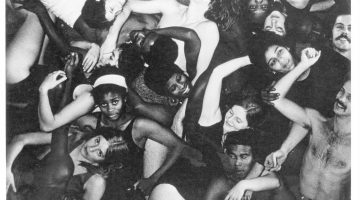Jann Nunn, et al.
“After the Fall: Winter Group Show”
Mercury 20 Gallery
Oakland, CA
December 6-January 12, 2012
By John Held, Jr.
I’m a nut for rubber stamps. Have been since the seventies. Back then finding visual rubber stamps was no easy feat. Stamps with words, yes, but acquiring visual rubber stamps was another matter altogether. One had to resort to all sorts of conceptual tricks to build a collection. Like the project of one Hungarian artist, “Found on the Ground,” where he went in search of rubber bits on the street and then used them to stamp out an artist book.
Then in 1978, a book came out, The Rubber Stamp Album, by Joni Miller and Lowry Thompson, gathering diverse sources of visual rubber stamps, which spawned a cottage industry in rubber manufacturing and distribution. The two authors went on to found Rubberstampmadness magazine, which became the bible of the medium (still in existence today under the editorship of Roberta Sperling @ PO Box 610, Corvallis, OR). The magazine in turn birthed a movement with regular conventions and trade shows. The madness continues.
So, it was with great interest when I came across the work of Sonoma State sculpture professor Jann Nunn, an Oakland resident participating in the Mercury 20 Gallery winter group show, “After the Fall,” who uses the rubber bottoms of crutches to impress prints. Nunn began collecting crutches to use as sculptural objects, and several are on display in the Mercury 20 exhibition. But in the course of her work with the material, she found the rubber tips of the crutches of interest and began impressing them on large sheets of paper hung on the wall.
The activity has an interesting heritage. Nunn’s brother had mobility issues as a child and used crutches to support himself. After his death Nunn devoted several projects to his memory. The use of crutches in her work continues to honor his life.
Painting and printmaking have always been physical activities, but lately the artworld has become increasing interested in works of art that result from direct actions. One only has to think of the current acclaim given the post-war Japanese Gutai art association, whose members painted with their feet, ran through the canvas, shot oil paint on canvas by means of a self-made cannon, or used a remote controlled car to leave traces on the canvas. Poking paper with the end of a crutch falls neatly into this heritage of action works.
This is not the first such action Nunn has undertaken. For a 2011 show at ABC No Rio in New York, she contributed the work, “Shooting Howl,” which perforated a City Lights edition of Allen Ginsberg’s, Howl, with an assault rifle. The artist writes that, “While my work embodies a strong physical presence, the craft is considered and often laborious, it is the ideas that are paramount.”
I had the good fortune to visit Nunn in her studio at the American Steel Building at 1960 Mandela Parkway between 18th and 20th Streets in West Oakland. I was amazed and impressed with the amount of space and energy the congregation of artist studios provided. The area is also becoming a haven for galleries, Mercury 20 being one of them. The future of West Oakland as a cultural incubator seems bright, and I am indebted to the artist for introducing me to her work and the emergent scene.
Link: http://www.mercurytwenty.com/upcoming/December_2012/Dec.html









